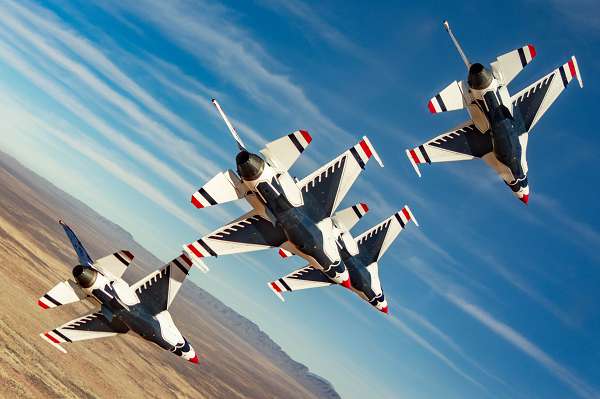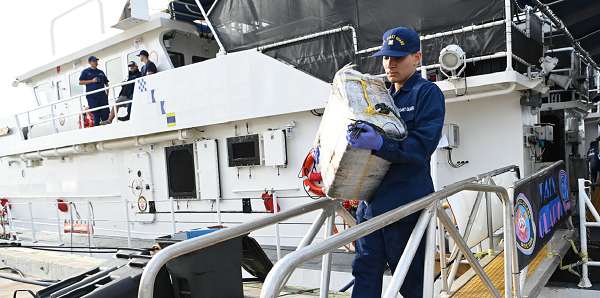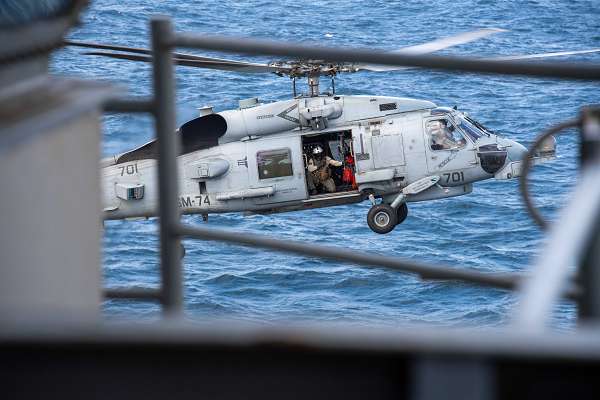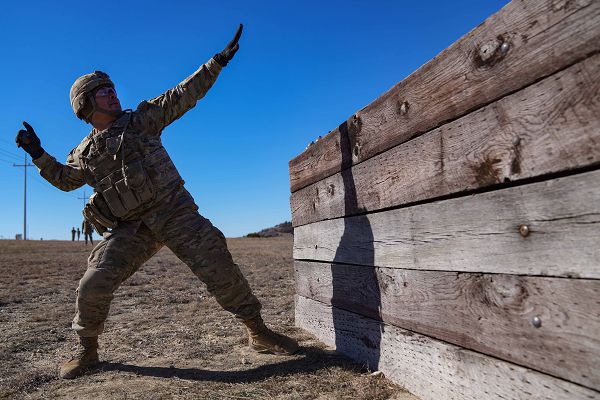- Details
- Hits: 4927

Spaceport, New Mexico. (January 17, 2024): It is one of the most spectacular demonstrations of aerial skill and daring in the world. In this photo by Staff Sergeant Breanna Klemm, the United States Air Force Air Demonstration Team “Thunderbirds” conduct winter training in preparation for another season entertaining audiences. The Thunderbirds were formed in 1953, just six years after the U.S. Air Force became its own branch of service, and they are the third-oldest formal flying aerobatic team in the world. Today’s Thunderbirds are assigned to the Air Force’s 57th Wing based at Nellis Air Force Base, Nevada.
The squadron's name is taken from the legendary creature that appears in the mythologies of several indigenous North American cultures. The Thunderbird, according to the Algonquian people’s mythology, rules the upper world while the Great Horned Serpent governs the underworld. The Thunderbird controls this ancient demon by firing thunderbolts to prevent it from overrunning the earth and devouring mankind. To these early American Indian tribes, the Thunderbird was literally a messenger from the Great Sun himself.
To become a Thunderbird, a pilot must undergo a rigorous selection process and must be nominated by at least two active Thunderbirds. Candidates must be experienced fighter pilots with a minimum of 750 hours in a fighter aircraft and must have demonstrated superior flying skills during their time in operational units. All candidates must have at least 3 years (but no more than 12 years) of military service and can expect to join the team for two years.
- Details
- Hits: 1035

Kodiak, Alaska. (January 8, 2024): Yes, THAT Alex Haley. In this photo by Petty Officer 1st Class Jasen Newman, crew members assigned to the Coast Guard Cutter Alex Haley conduct in-flight helicopter refueling of a MH-60 Jayhawk helicopter while on patrol in the Bering Sea. The Cutter’s namesake is indeed the famous author of Roots: The Saga of an American Family that became a worldwide sensation and won him the 1977 Pulitzer Prize for Fiction. ABC adapted the book into a television miniseries that aired to a record-breaking audience of 130 million viewers. Haley served in the Coast Guard until his retirement in 1959 at the rank of Chief Petty Officer with an extensive list of decorations from his service in World War II and Korea.
The Cutter Alex Haley operates in one of the most dangerous oceans on earth. Its mission is to rescue ships at sea and enforce maritime law in America’s most northern regions. The Bering Sea is in the Northern Pacific Ocean which divides the two largest land masses on earth, the Americas and Eurasia. The narrowest point of the sea is the Bering Strait which is only fifty-three miles wide and whose strong currents and unpredictable depths make it particularly treacherous. The Bering is one of the coldest seas on earth with frigid temperatures often below freezing for most of the year. Its shallow depth, volatile weather, and extremely cold sea temperatures create waves that are shorter and pack more power than deep sea waves. Winter storms are frequent and severe, often coating the superstructures of ships with ice and generating wave heights that may exceed forty feet.
- Details
- Hits: 664

Marine Corps Barracks, Washington D.C. (January 25, 2024): "All right, they're on our left, they're on our right, they're in front of us, they're behind us...they can't get away this time." U.S. Marine Chesty Puller. These words from America’s most decorated Marine typify the courage and tenacity of the Corps. In this photo by Lance Cpl. Chloe McAfee, Marine Corps Lance Cpl. Chesty XVI, the Marine Corps mascot, stands at attention while Navy Secretary Carlos Del Toro promotes him from the rank of private first class to Corporal during a ceremony at Marine Barracks Washington, Jan. 17, 2024.
In 1957, the Corps adopted the tenacious bulldog as its mascot in honor of Puller who was awarded five Navy Crosses and one Distinguished Service Cross for bravery across three wars and two counterinsurgency campaigns. With six crosses, Puller is second behind Eddie Rickenbacker for citations of the nation's second-highest military award for valor. Puller retired from the Marine Corps in 1955 after 37 years of service and he died in 1971 at age 73.
To this day, the unofficial “lights out” slogan of the Marines is “Good night, Chesty, wherever you are.”
- Details
- Hits: 617

Miami, Florida. (January 9, 2024): It is an industry that dumps tons of poison onto our streets that results in violence and mayhem in our neighborhoods. Thanks to the U.S. Coast Guard, a sizable chunk of these deadly narcotics will not make it to American shores. In the photo Petty Officer 2nd Class Diana Sherbs, a crew member of the Coast Guard Cutter Margaret Norvell offloads $32 million in illegal narcotics after a recent seizure in the Caribbean. Six suspected smugglers were detained aboard the Norvell and they will face American justice.
The Caribbean Sea is a world hot spot for drug trafficking and is one of the most dangerous assignments in the Coast Guard. Drug smugglers are almost always heavily armed and desperate to avoid capture making interdictions at sea especially hazardous. Cocaine is the most profitable illicit drug and it accounts for 85 percent of the drug market in the region. Colombia is the origin of over 95 percent of cocaine imports within the region followed by Venezuela which is the source of an additional 29 percent.
- Details
- Hits: 879

Red Sea. (January 27, 2024): The Iranian back Houthi rebels in Yemen continue to attack peaceful shipping in the Gulf of Aden and the USS Eisenhower Carrier Strike Group is fighting back. In this photo by MC3 Nicholas Rodriguez, an MH-60R Sea Hawk helicopter, attached to the "Swamp Foxes" of Helicopter Maritime Strike Squadron 74, lands on the flight deck of the Eisenhower after a reconnaissance mission. This week, the Carrier group came under direct missile attack which represents an escalation on the part of the Iranian backed group.
The Eisenhower, commissioned in 1977, is the second of ten Nimitz-class aircraft carriers currently in service and is named after the 34th President of the United States. Assisting the Eisenhower are six Navy surface ships including the cruiser USS Philippine Sea and the destroyers Gravely, Mason, Carney, and Laboon. The strike group is coordinating its attacks with the United Kingdom and is supported by maritime assets from Australia, Bahrain, Canada, and the Netherlands.
- Details
- Hits: 1241

Fort Cavazos, Texas. (January 9, 2024): Every recruit undergoing basic combat training can attest to the horror they felt when a drill sergeant first handed them a live grenade. In this photo by Sgt. 1st Class Whitney Hughes, a soldier assumes the proper launch posture to accurately throw a live grenade. Before coming near a live grenade, every Soldier and Marine is taught a highly rigid set of procedures they will use when it is time to toss the real thing.
First, every troop is taught the hand-exchange process receiving a grenade and the proper aiming method. Trainees spend hours tossing practice dummies until each has perfected their launch technique. On the day of the real deal, troops are taken to a special range that has fortified concrete “stalls” placed side-by-side and usually positioned atop a hill so that grenades fall away naturally.


